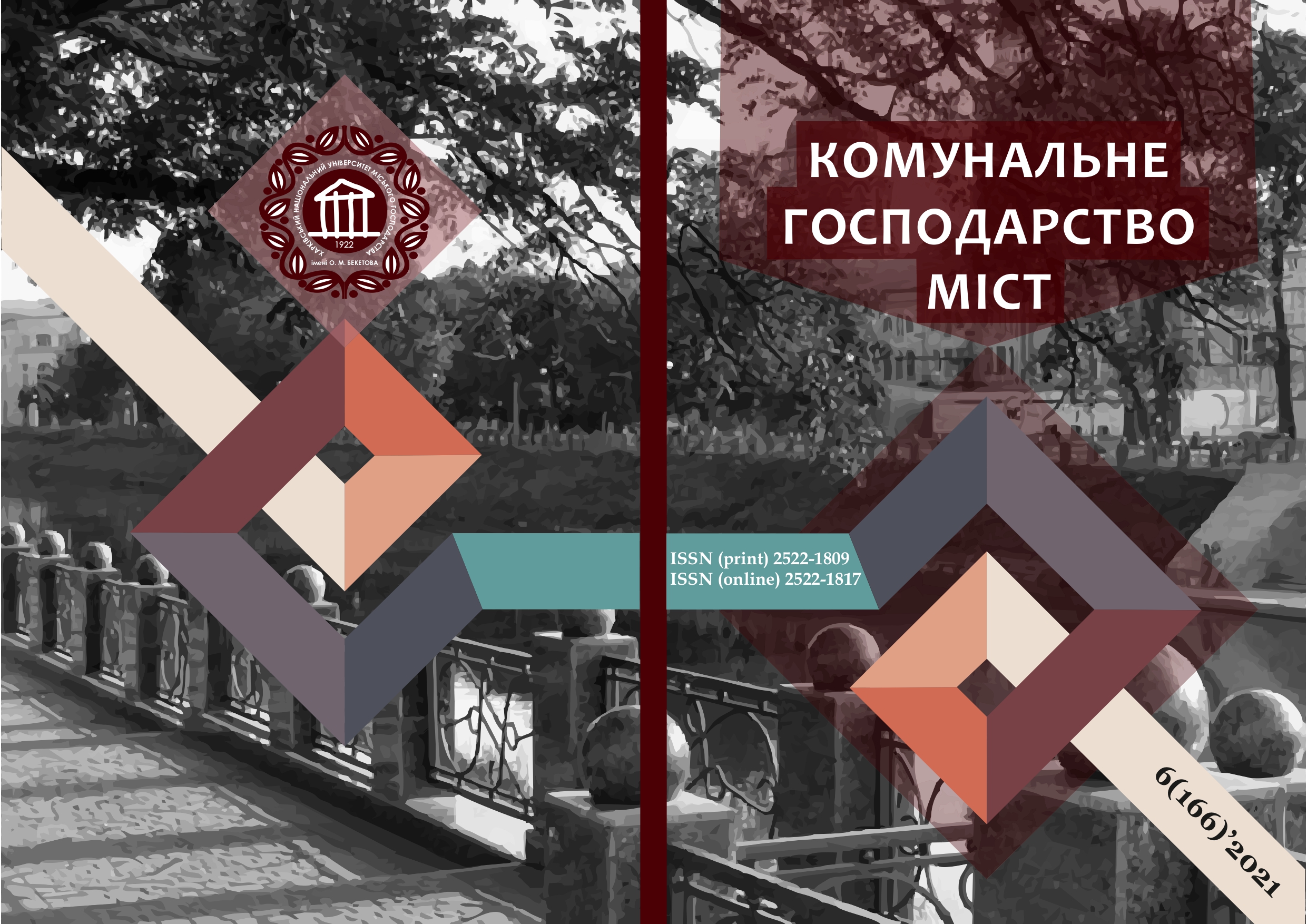MODEL OF OPERATION OF COMBAT AIRCRAFT GROUND TRANSPORTATION SERVICE SYSTEMS
Array
Keywords:
model, combat aircraft, airfield, transport service, modular systems.Abstract
The article analyzes the current state and prospects of development of systems of ground transport maintenance of aircraft, which allowed to form the purpose of the study in this development. The chosen topic is quite relevant, because effective organization of combat aircraft maintenance allows raising combat effectiveness of Ukrainian air forces. One of the directions of maintenance cost reduction is effective use of resources. The study establishes that in order to improve the quality of transport maintenance and increase the combat effectiveness of the Armed Forces and National Guard of Ukraine, it is necessary to pay attention to the use of new transport vehicles, especially modular designs and development of technology to determine the optimal distribution of transport resources for aircraft maintenance, for different conditions of the transport complex and different types of aircraft maintenance. The authors propose to consider two aircraft maintenance schemes – existing using existing technology and proposed using a modular design. In a modular design, a wheeled tractor acts as a tug, which drives mobile modules, which are special means for servicing aircraft. Such an energy-efficient vehicle may consist of 4 modules at a time. The process of delivering the cargo required for servicing the aircraft at the airport is estimated at costs, which form a set of cost values for each technological process of servicing the aircraft. The set criterion is influenced by the parameters: the cost of performing a unit of the corresponding operation, the cost of one hour of work of one worker, the time of performing the corresponding operation, the number of modules involved to perform the corresponding service, the number of aircraft. The developed models of functioning of combat aircraft maintenance systems for maintenance will allow to take into account the influence of random factors, to assess the possibility of using modular designs, as well as to determine the efficiency of existing resources on airfields in Ukraine.
References
2. NATO–Ukraine cooperation in the military sphere. URL: https://nato.mfa.gov.ua/ukrayina-ta-nato/spivrobitnictvo-ukrayina-nato-u-vijskovij-sferi [in Ukrainian]
3. Novichonok, S.M., Babich, O.V. & Terentyeva, I.V. (2020). Problems of standardization of aerodrome-technical support of the state aviation of Ukraine and ways of their solution in the conditions of interaction with NATO and international integration. Weapons systems and military equipment, 2(62), 24–34. [in Ukrainian]
4. Vision of the Air Force of the Armed Forces of Ukraine: replacement of the Soviet Union and unification. URL: https://mil.in.ua/uk/articles/viziya-povitryanyh-syl-zsu-zamina-radyanskogo-ta-unifikatsiya/ [in Ukrainian]
5. Kirichenko, V.V., Kavyuk, V.V. & Vasiliev, B.G. (2017). Solving problematic problems of prospects for the development of aerodrome maintenance of aircraft. Science and Technology of the Air Force of the Armed Forces of Ukraine, 2(27), 42–48. [in Ukrainian]
6. Petrovsky, O.M. (2010). Marketing of partnership interaction of enterprises in the organization of maintenance and repair of aircraft. Effective economy of Ukraine on economic issues, 4, 24–29. [in Ukrainian]
7. Kucher, O.G. & Vlasenko, P.O. (2009). Evaluation of the quality of maintenance of the airline's aircraft. Science-intensive technologies, 4, 14–20. [in Ukrainian]
8. Sun, Z.F., Ma, X. & Sun, D.X. (2013). Construction of the Air Offensive Operation Battlefield Support System Based on the Internet of Things Technology. Advanced Materials Research, 834–836, 1873–1876. https://doi.org/10.4028/www.scientific.net/AMR.834-836.1873
9. Škultéty, F. & Stalmašeková, N. (2018). Pre-flight inspections of aircraft emergency equipment via RFID technology, Transportation Research Procedia, 35, 279–286. https://doi.org/10.1016/j.trpro.2018.12.010
10. Prescott, D. & Andrews, J. (2010). Modelling the Use of Maintenance to Minimise Aircraft Service Disruption. IFAC Proceedings Volumes, 43(3), 44–49. http://dx.doi.org/10.3182/20100701-2-PT-4012.00009
11. Qin, Y., Wang, Z.X., Chan, F.T.S., Chung, S.H. & Qu, T. (2019). A mathematical model and algorithms for the aircraft hangar maintenance scheduling problem. Applied Mathematical Modelling, 67, 491–509. https://doi.org/10.1016/j.apm.2018.11.008
12. Hobbs, A. (2021). Aircraft Maintenance and Inspection, Editor(s): Roger Vickerman. International Encyclopedia of Transportation, Elsevier, 2386, 25–33.
13. Zaki, S.M., Ngadi, M.A. & Razak, S.A. (2012). Towards Deploying Vehicular Ad Hoc Networks on Aerodromes to Mitigate Incursions. Advanced Materials Research, 433–440, 4968–4976. https://doi.org/10.4028/www.scientific.net/AMR.433-440.4968
14. Verhoeff, M., Verhagen, W.J.C. & Curran, R. (2015). Maximizing Operational Readiness in Military Aviation by Optimizing Flight and Maintenance Planning. Transportation Research Procedia, 10, 941–950. https://doi.org/10.1016/j.trpro.2015.09.048
15. Kumar Shukla, S., Kumar, S., Selvaraj, P. & Rao, V.S. (2014). Integrated Logistics System for Indigenous Fighter Aircraft Development Program. Procedia Engineering, 97, 2238–2247. https://doi.org/10.1016/j.proeng.2014.12.468
16. Al-Momani, H., Al Meanazel, O.T., Kwaldeh, E., Ala-ween, A., Khasaleh, A. & Qamar, A. (2020). The efficiency of using a tailored inventory management system in the military aviation industry. Heliyon, 6(7), 257–269. https://doi.org/10.1016/j.heliyon.2020.e04424
Downloads
Published
How to Cite
Issue
Section
License
The authors who publish in this collection agree with the following terms:
• The authors reserve the right to authorship of their work and give the magazine the right to first publish this work under the terms of license CC BY-NC-ND 4.0 (with the Designation of Authorship - Non-Commercial - Without Derivatives 4.0 International), which allows others to freely distribute the published work with a mandatory reference to the authors of the original work and the first publication of the work in this magazine.
• Authors have the right to make independent extra-exclusive work agreements in the form in which they were published by this magazine (for example, posting work in an electronic repository of an institution or publishing as part of a monograph), provided that the link to the first publication of the work in this journal is maintained. .
• Journal policy allows and encourages the publication of manuscripts on the Internet (for example, in institutions' repositories or on personal websites), both before the publication of this manuscript and during its editorial work, as it contributes to the emergence of productive scientific discussion and positively affects the efficiency and dynamics of the citation of the published work (see The Effect of Open Access).

